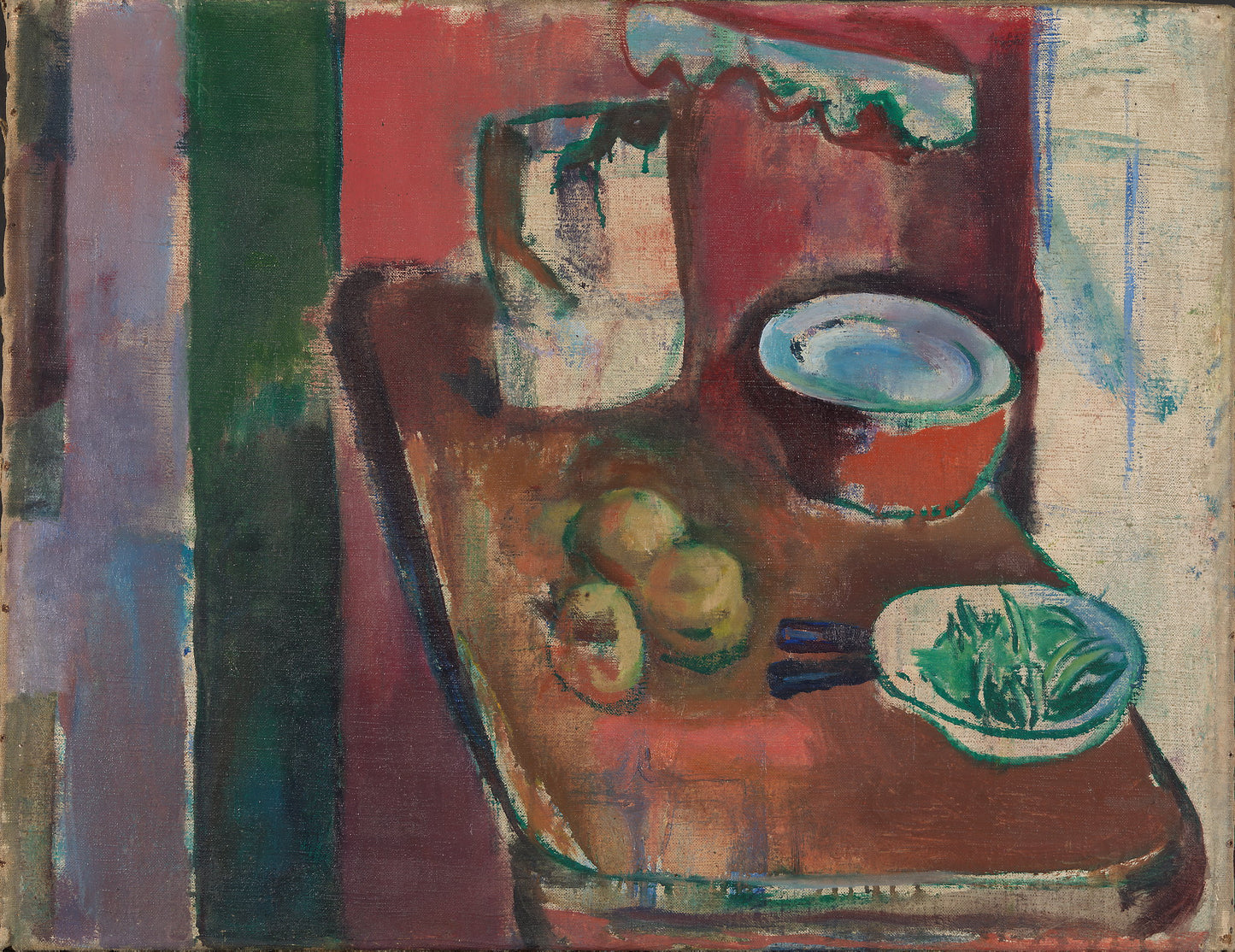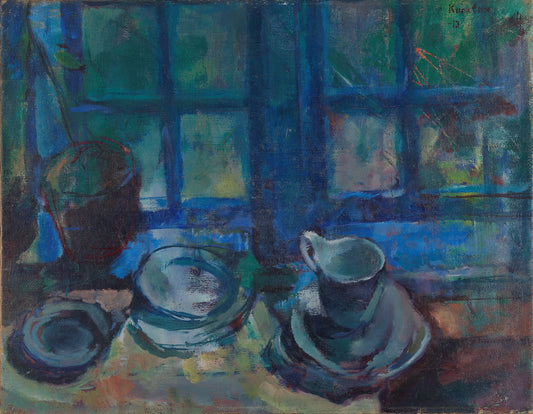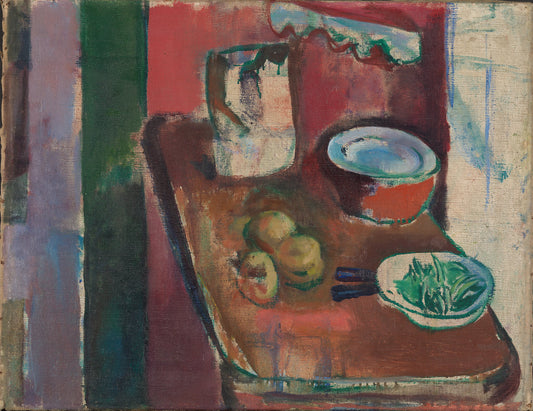Ludvig Karsten
The red kitchen
The red kitchen
Couldn't load pickup availability
High-quality reproductions from the National Museum's collection. Posters by DAIDDA are printed on Litho White Matt - 230 gram photo paper in premium quality. Artprints by DAIDDA are printed on Moab Entrada Natural 190 gram cotton art paper in premium quality. Produced by DAIDDA.
About the original:
Date: Presumably 1913
Other titles: The Red Kitchen (ENG)
Designation: Painting
Material and technique: Oil on canvas
Technique: Oil
Material: Canvas
Dimensions: 59 x 76.8 cm
Subject: Visual arts
Classification: 532 - Visual arts
Subject type: Still life
Acquisition: Purchased 1926
Inventory no.: NG.M.01478
Part of exhibition: Art 3. Works from the collection 1814-1950, 2007 - 2011
Registration level: Single object
Owner and collection: The National Museum of Art, Architecture and Design, Visual Art Collections
Shipping and returns
Shipping and returns
Shipping: We deliver to Scandinavia, the EU, the USA and several other countries. Please contact us if your country is not listed and we will try to arrange delivery.
Delivery time: 2-5 days within Norway, 7 days in Europe, 14 days globally.
Packaging: Our products are made to order and sent rolled in environmentally friendly packaging.
Customs Fees: International orders may be subject to customs fees, which are not included in shipping costs.
Return policy: You can return images within 14 days. See our returns page for more information.
Secure Payment: We never store your payment details. See our privacy policy for details.

See all works
-
The blue kitchen
Vendor:Ludvig KarstenRegular price From 150,00 NOKRegular priceUnit price per -
The red kitchen
Vendor:Ludvig KarstenRegular price From 150,00 NOKRegular priceUnit price per -
Spring, Skagen
Vendor:Ludvig KarstenRegular price From 150,00 NOKRegular priceUnit price per -
In front of the mirror
Vendor:Ludvig KarstenRegular price From 150,00 NOKRegular priceUnit price per

Ludvig Karsten
Ludvig Karsten was a Norwegian painter. Karsten developed his distinctive style under the decisive influence of Edvard Munch, whom he met in Åsgårdstrand for the first time in 1901, but also received important impulses from the French Late Impressionists and from Henri Matisse. Karsten was the brother of, among others, Heinrich Joachim S. Karsten and Marie Karsten.
Karsten was a student at the Norwegian School of Craft and Art Industry in 1891–95, studied in Rome in 1895–96, interrupted by a short stay in Munich, and stayed in Spain in 1897. After a stay at home, in 1899–1900 he studied again in Munich and the following year traveled to Paris, where he became a pupil of, among others, Eugène Carrière. From 1910 he mostly lived in Copenhagen, and from 1920 he often painted in the summers on Skagen. His painterly treatment is broadly suggestive with often random composition and summary form, but with a suggestive ability to highlight the essential and characteristic of the subject; stroked nervously expressively, the color sometimes flickering, sometimes luminous and glowing with a penchant for contrasting, expressive juxtapositions, for example, of sonorous red and ice-green tones. As a colourist, Karsten is one of our country's most important.
His most important works include The Siblings in Bergen Museum and The Beggars (both 1901), The Light and Dark Act in the National Museum, Stockholm, and the huge composition Golgatha (1924) in the Statens museum for art in Copenhagen. Among other things, the National Museum owns major works such as Tæring (1907), The Blue Kitchen and The Red Kitchen (both 1913), Self Portrait and In Front of the Mirror (both 1914), in addition two of his highly personal copies or rather color paraphrases of older art, Jusepe de Ribera's Burial (1906) and Jacopo Bassano's Flight into Egypt (1922). He also copied Rembrandt's Bathsheba (1910) and Antoine Watteau's Gilles (1926). As a portrait painter, he, like Munch, preferred the full-sized figure, but without its intrusive psychological interpretation.





